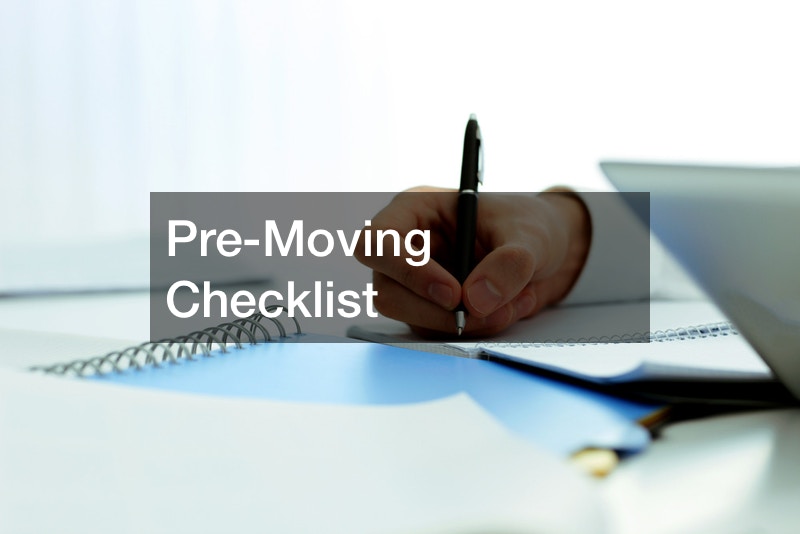The rise of online shopping has led to an increase in demand for commercial real estate in warehouses and more thought to supply chain logistics. As a result, many industries are moving into the world of warehouse investment, both for-profit and to meet commercial needs.
Today, warehouses are cropping up in new buildings and on the sales pages because they are promising returns of as much as 10 percent year-over-year. The demand for them is high. If you are looking to expand your business with a warehouse, learn more about the cost to buy a warehouse, and tips for moving in.
Benefits of Buying a Warehouse
Online shopping is just one reason warehouses are cropping up by the dozens. Commercial business owners are investing in them for profit, and to expand their business. Though the initial cost to buy a warehouse is significant, it does pay off in many ways for business today. That is the main benefit of buying a warehouse, but there are more.
Tax breaks are another reason businesses are expanding into warehouse space. When you own a warehouse, you can write off expenses such as commercial fencing, commercial roofing, and your commercial fire sprinkler system. Any commercial expense is a business expense for tax season.
You can also plan better with your budget. You will have the initial cost to buy a warehouse, which is a fixed expense. This will build equity for you. You’ll have the fixed cost of the mortgage payment, as opposed to the fluctuated costs you’ll pay when leasing. You can also do what you want with the existing logistics and schematics of the warehouse, a benefit you won’t have with a lease.

Estimate the Cost to Buy a Warehouse
The cost to buy a warehouse is estimated using a number of different variables, much like buying a home or any other property is. The size of the warehouse, the location, and what it will be used for will all be factors used to determine the overall cost. Before you begin the budgeting, look at the property values of the warehouses in the location you are interested in to get a starting idea of costs.
Warehouse property is priced by the square foot. The average cost to buy a warehouse is in the $8.75 USD per square foot range. Know your budget. This leaves you with an idea of how big a warehouse you can invest in. Don’t make any decisions on a property until you have an idea of the size of the warehouse that you can afford.
One way to learn about the costs of warehouse space is to talk to brokers in the area. You don’t have to make a commitment with any of them. Do some research to find out the average cost to buy a warehouse per square foot.
Other things to factor into your research include conditions, age, equipment needs, and what you need the space for. Find out what older warehouses sell for now and what it will cost you to bring equipment in. You also need to factor in what it will cost you to improve conditions if you are purchasing a warehouse that is older and needs some repair. In the end, you could spend as little as $10,000 for a warehouse, or as much as one million or higher.
In addition to the cost of the property, you’ll have to factor in operating expenses. That includes insurance, repair, taxes, and a list of maintenance vendors you will need such as a commercial locksmith or commercial cleaning.
What do Banks Need for a Warehouse Loan?
When you have your budget determined, you can determine how you will get the financing. Commercial warehouses have earning potential and will provide a return, and this could make it easier to secure a mortgage for the warehouse.
For warehouse commercial property, you can often borrow as much as 70 percent on your own. Borrowing up to 100 percent with a co-signature or a guarantor may be available to you as well. For a commercial showroom, you may be able to borrow up to 75 percent of the property value.
Most loans for a warehouse have terms of 20 years, with an interest-only term of 5 years. Loans higher than one million dollars will usually be assessed individually. To get the loan you will need a business plan.
When calculating the cost to buy a warehouse, banks will need to know your serviceability ratio. Depending on the terms of your mortgage, banks will be looking for the amount of income to be at least 1.1 times to 1.4 times greater than your expenses.
Good credit is not necessarily the most important factor here. You may be able to explain credit concerns on your report to your lenders and still be approved for a warehouse mortgage. Having an asset position that comes off as stable will help the banks to secure the approval, regardless of what your credit history looks like.
In your business plan, include cash flows, forecasts, who your competition is, and what your business model is.
In your business plan, banks will want to see what research you have done as far as securing your location is concerned. If you are receiving and delivering goods, for example, you’ll need to have access to logistics channels like airports and highways for shipping. Conduct some research on your own on warehouses like Amazon sites. Their locations are designed to make their commercial workflow smoother, with fewer costs.
You also want to be located near larger urban centers if you have distribution channels in the game plan. At the same time, if you can find something in a rural area that is significantly less expensive than an urban center closer to shipping channels, banks will want that research as well.
When you are pulling that research into your business plan, plan for ways to offset that lower price. You’ll need to know exactly how much transporting goods out of a rural area will cost, whether you are shipping them or moving them with your own logistics fleet.

Transition Plan for Moving Into a Warehouse
You will have to factor in the cost of commercial moving companies when you are budgeting your cost to buy a warehouse. This requires an intensive logistics strategy on your part. Develop a transition plan and turn it into a schedule that your team will have access to. Have every department head do the same before you finalize yours.
You will need to determine the date, your manpower, and what you will be moving. Make a schedule and a timeline for the move, and your budget for moving costs. You will need a schedule for yourself and the company, and a schedule for your team.
Strategize Your Moving Date
The date of your move is the first thing to determine. Don’t book the moving company until you know exactly what you are moving to. Your quote and your final costs will be determined by the weight and quantity of inventory you are moving.
There are many things to consider when just planning the date. Your business will likely still be undergoing daily operations at the time of your move. You may be considering a shutdown while you move to make things easier. Or, you might consider moving when a shutdown is already on the schedule. Once the date has been determined, establish a communication plan with all department heads and team members.
You’ll need to determine who needs to be informed first, and what everyone’s moving day role will be. Labor resources will need to be considered for both the move, and your daily operations. You’ll also need to have a schedule for your inventory and equipment.
You may want to consume as much inventory as possible to eliminate weight for the move. You may already have some inventory that you don’t need or don’t need to make the move. Eliminate it or consume it, a move that may need its own strategy. Do the same with your equipment. Make a plan with every equipment piece that you own, old or otherwise. It may be more affordable to purchase new equipment, than move old equipment.
When you have your date secured, have a second look to see what you will need to update it to your organization’s standards. Create a budget and a timeline on what you will need to make the updates, and what inventory you will need to procure to do so.

Pre-Moving Checklist
A checklist will help make a warehouse move go smoothly because it details what you need to do with every detail in your move. Start getting the move organized as soon as you close the deal on the warehouse. Have schedules ready for every day up until moving day.
Every employee should have a schedule for the entire duration of the move. You should have their duties clearly spelled out. You will need to have employees at each location the day of, and a plan for operations. For the day of the move, be sure that your team has a list of contact information, and be sure that your movers do as well. There are bound to be problems that day. One problem could become a nightmare if someone forgets their cell phone or has the wrong number.
Arrange for your utilities well ahead of time. Book IT, Internet, phone, cable, electric, water, and any other service you will need. Begin to keep a log of every phone contact or order for services. Create a team to manage this if you don’t already have one, and have plans for manpower to be on-site when needed if equipment needs to be installed for utilities.
Make arrangements for all other vendors. New vendors may be added to your budget in your cost to buy a warehouse. Budget this as early as possible. Advise new vendors of your moving date, and begin the change of address protocol.
If this is going to be a lengthy task, create a team for it. Include the post office, insurance, your customers, investors, and partners. Other vendors you may want to include in this list are commercial pest control, commercial garage door repair, commercial plumbing, and commercial electric.
Check your permits well before moving day, and not the day of. You’ll need to have the right paperwork at both locations or your move could end before it even begins. Check for building permits, fire permits, occupant rates, and any other permits you are advised of before moving dates.
If you are moving between states this is even more important, although county codes between municipalities can change an entire move with one sentence on a permit line. This is most important for insurance matters, but if you are adding to your new building or changing it, check with your new city to see what is required.

Plan Your Warehouse Costs to the Penny
A new warehouse is an exciting change for your organization. It’s a stressful change, with a lot to think about, but the benefits mean a return on your investment. Warehouse strategy and logistics today is an incredible business that breathes expansion into your organization. You want to do it right from the beginning. Begin with the mindset of a budget and how to use it well, over worrying about money from the beginning.
It is not possible to budget for every penny of your new plan. When you are working out the cost to buy a warehouse, expect the unexpected from the minute you start researching until moving day. Plan for as much as you can. A new warehouse has a few more things to consider than your standard new property purchase.



